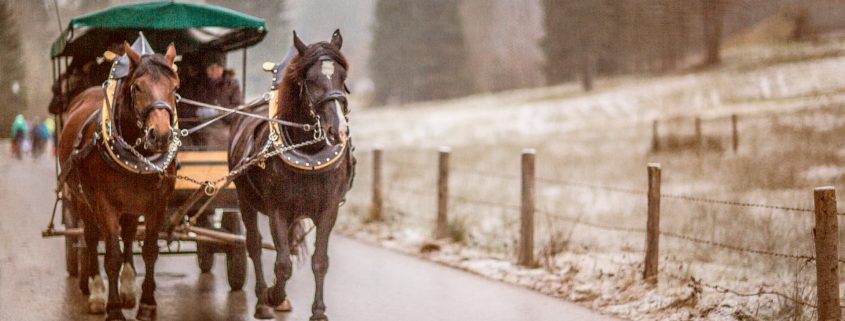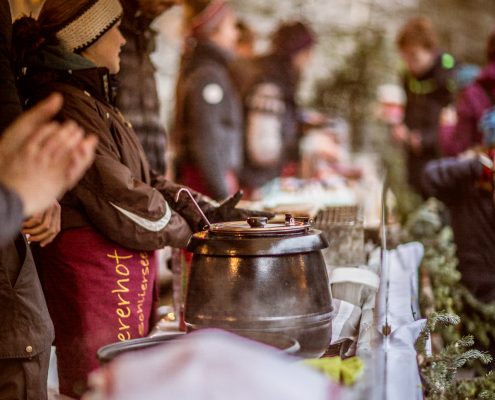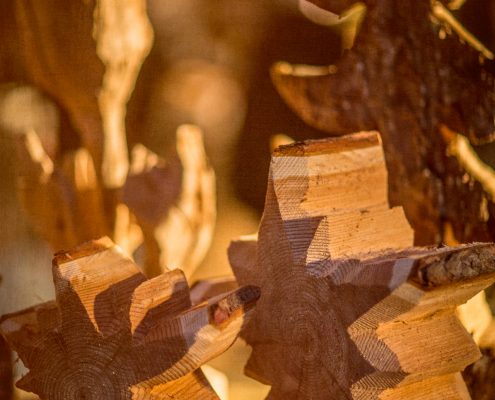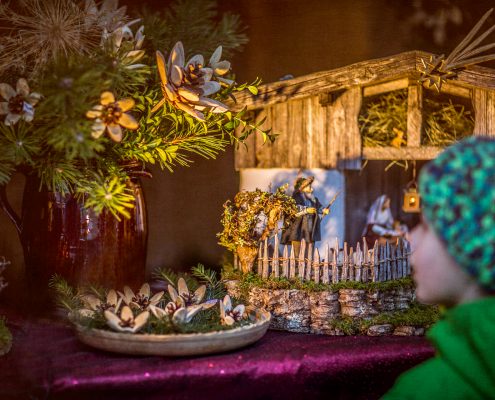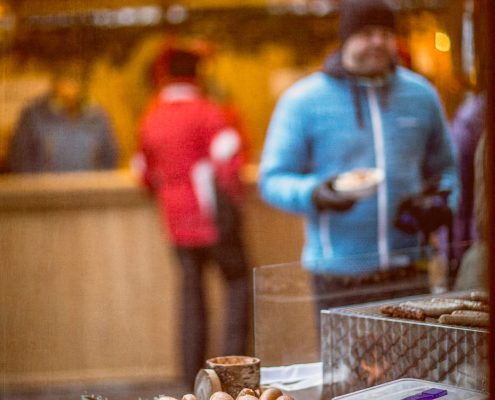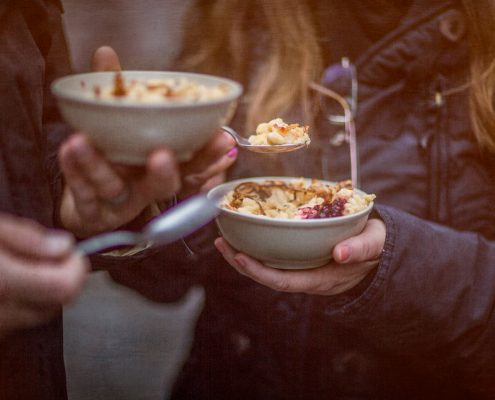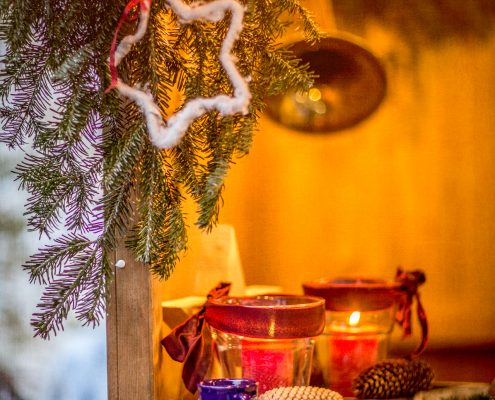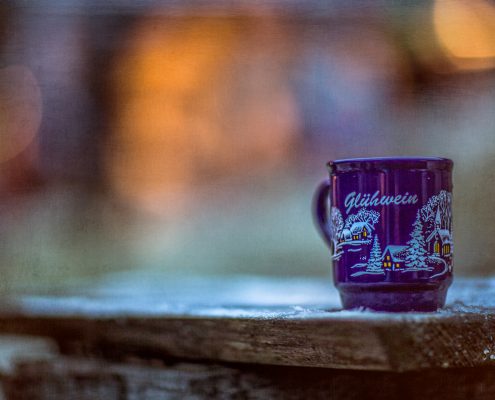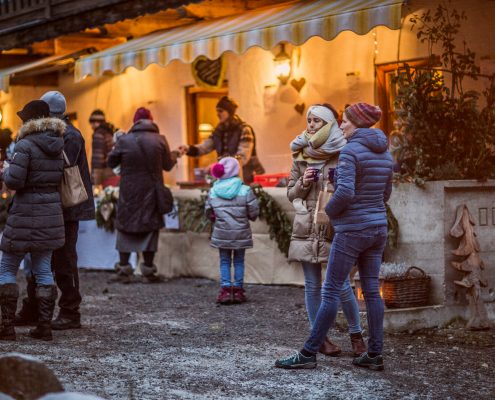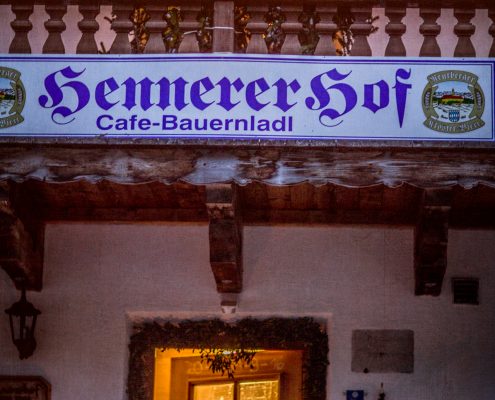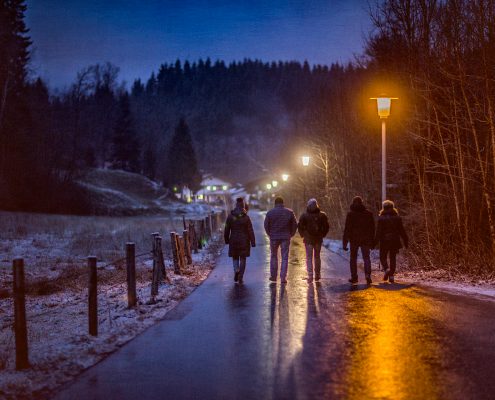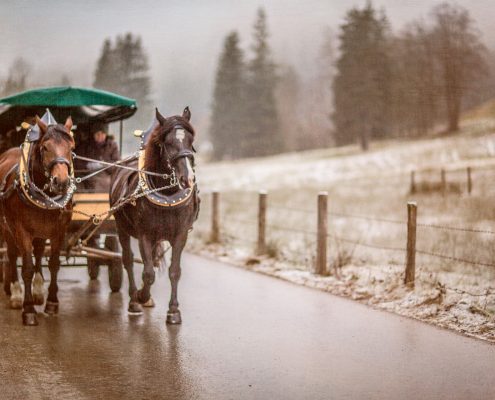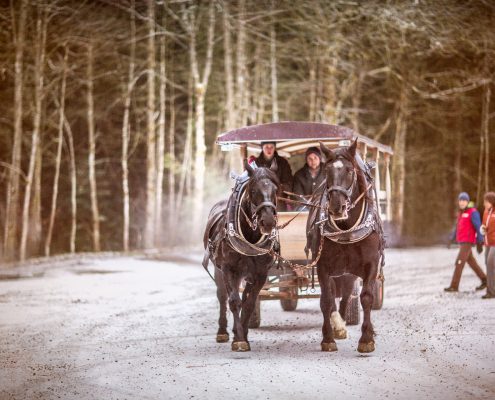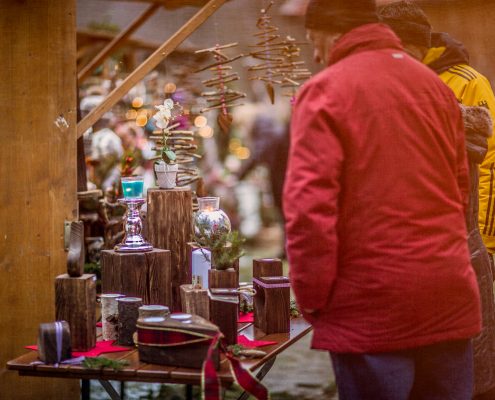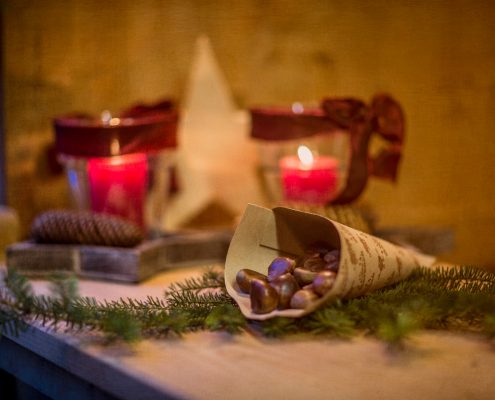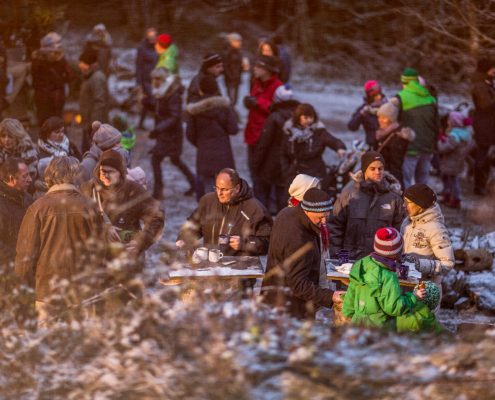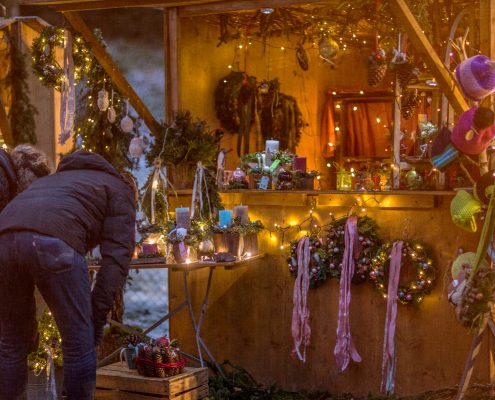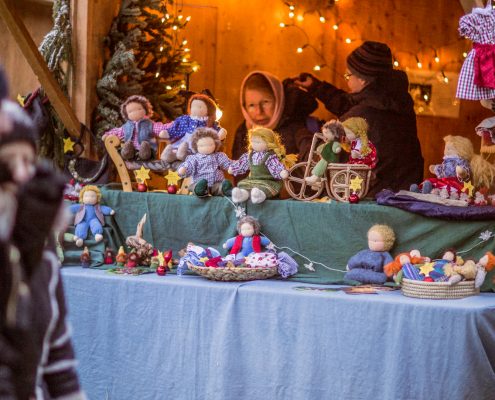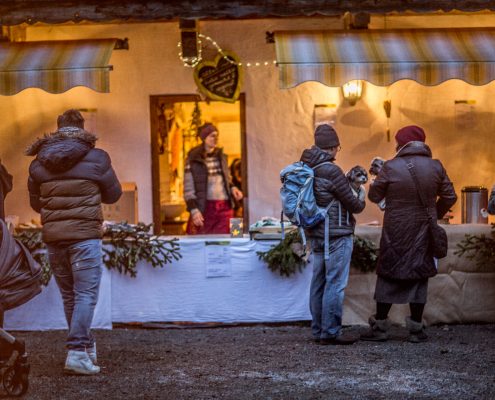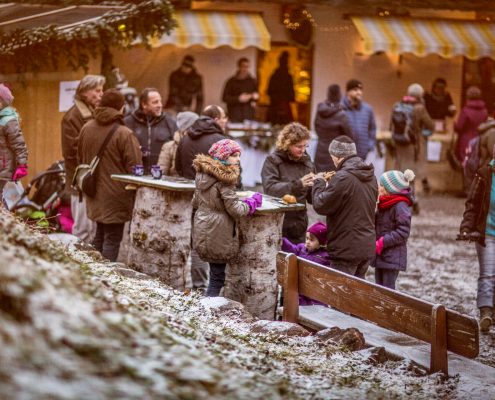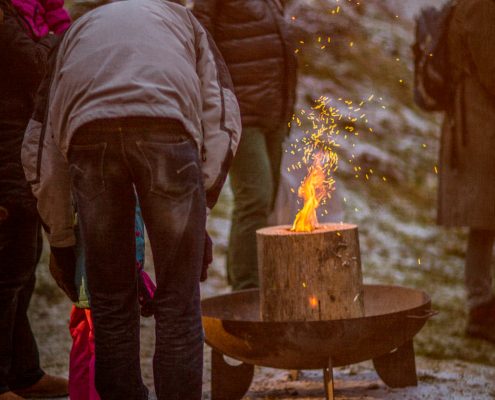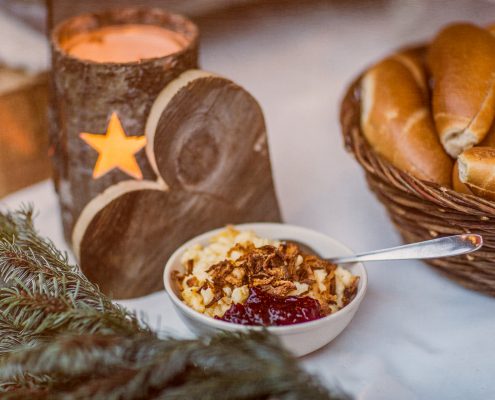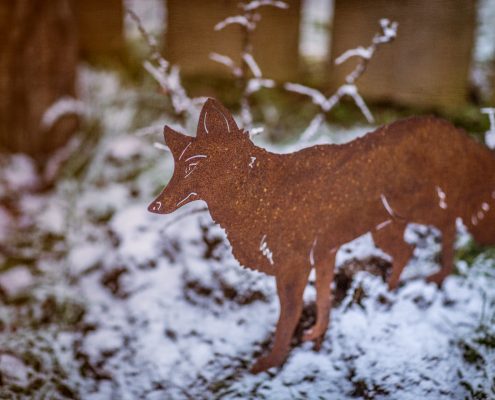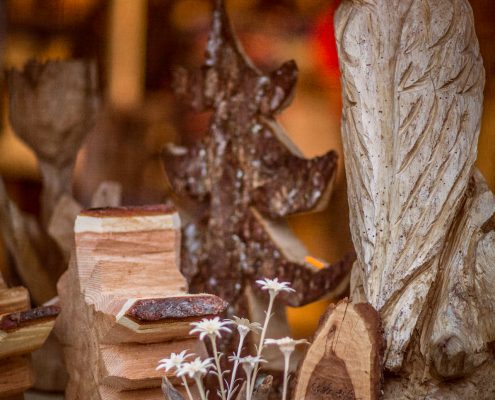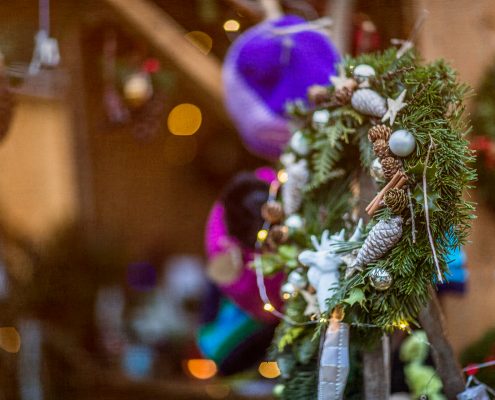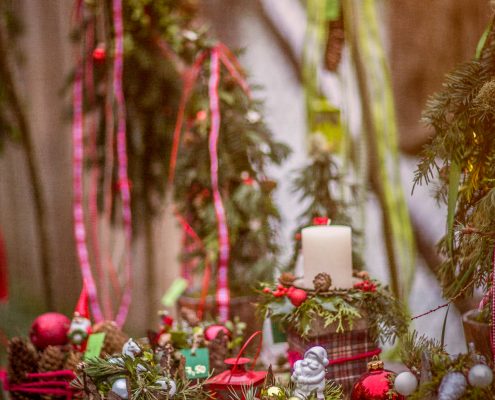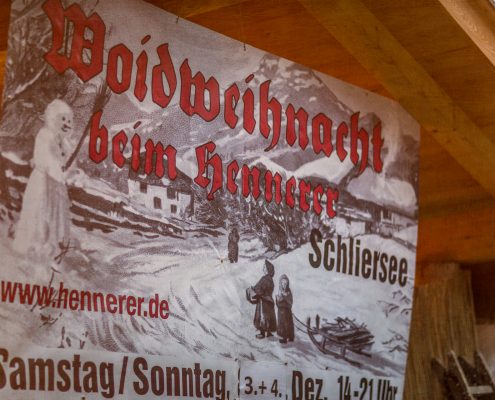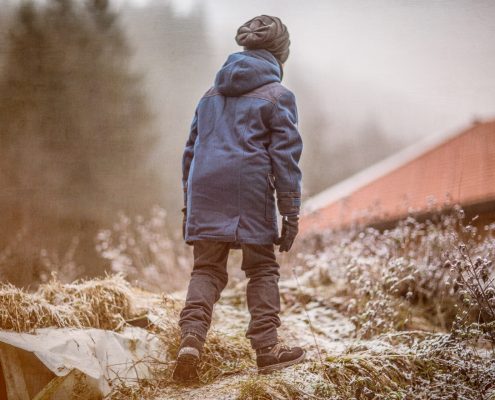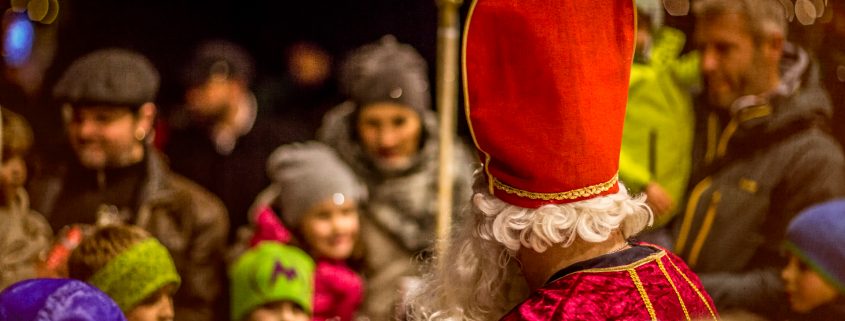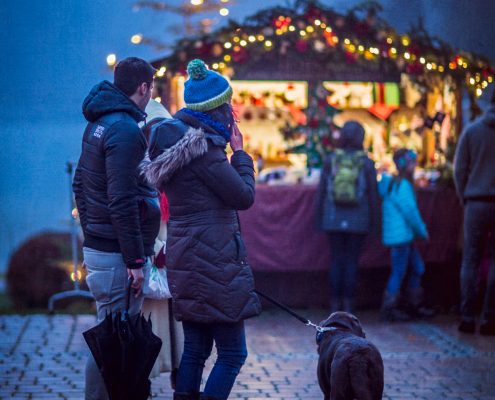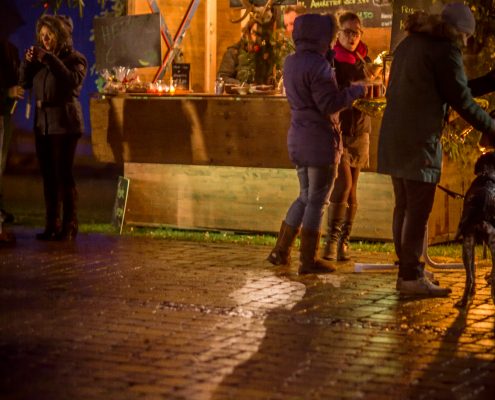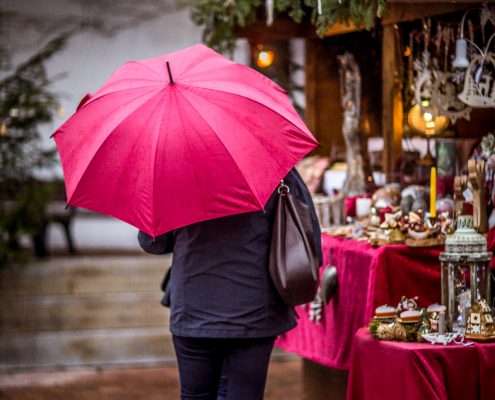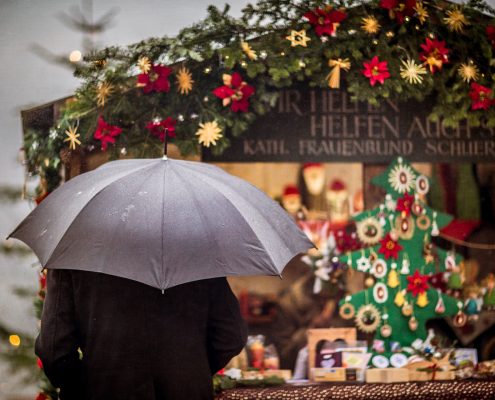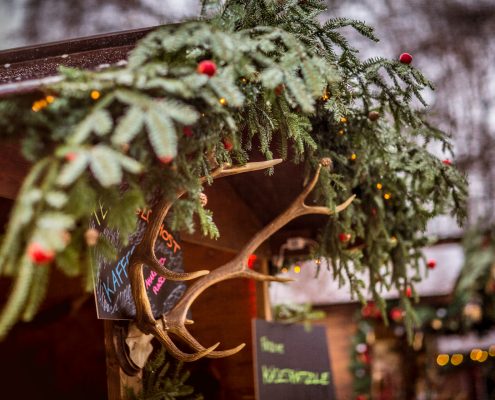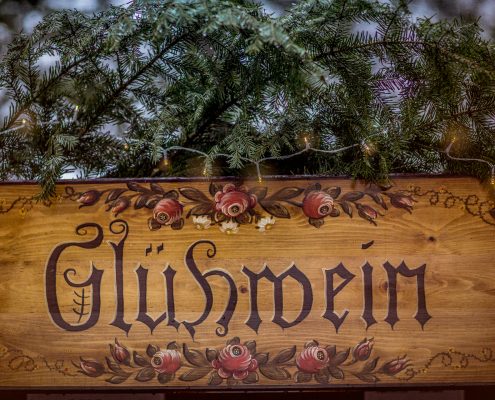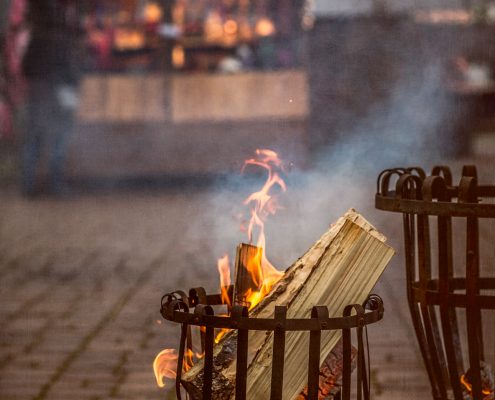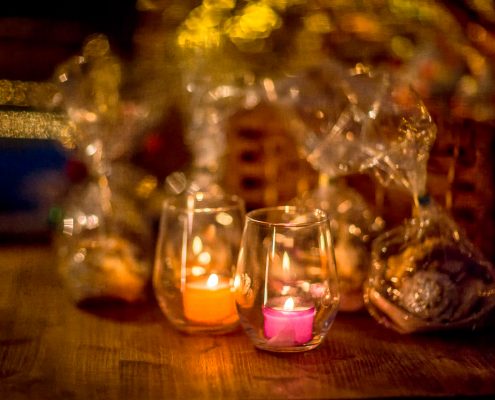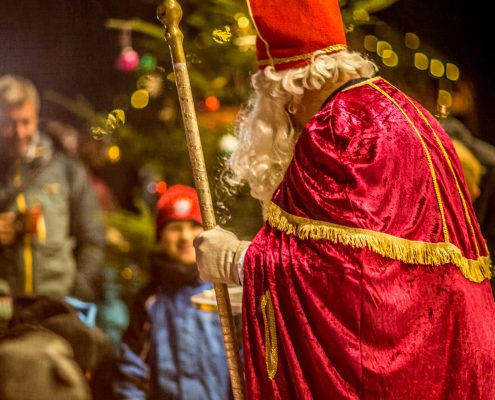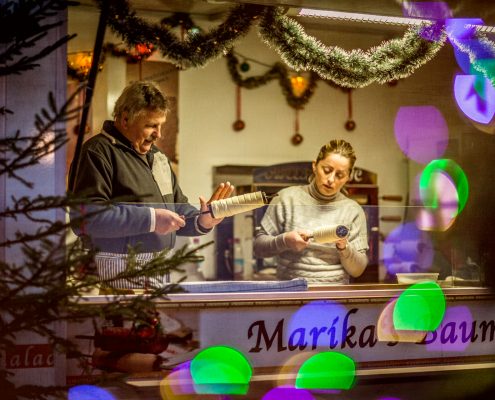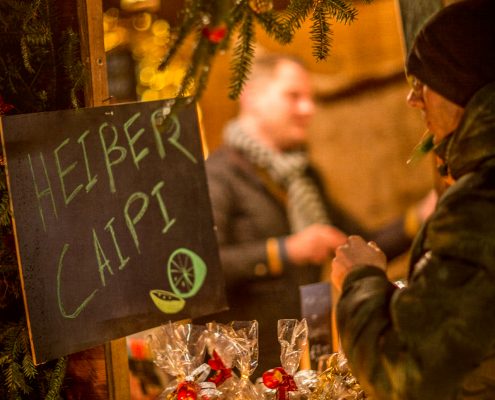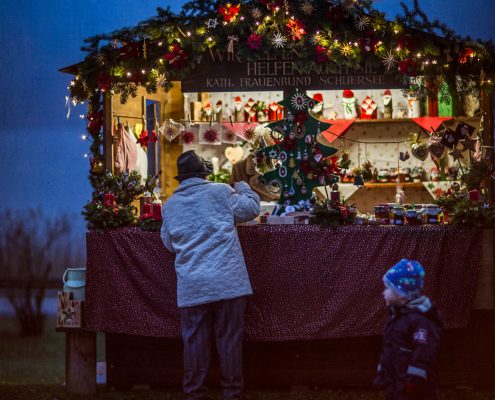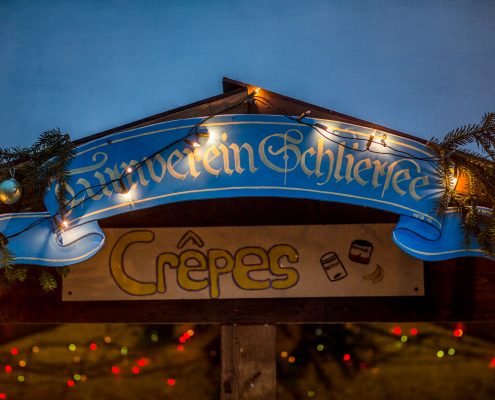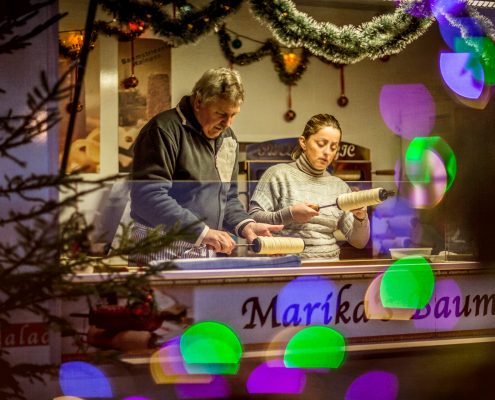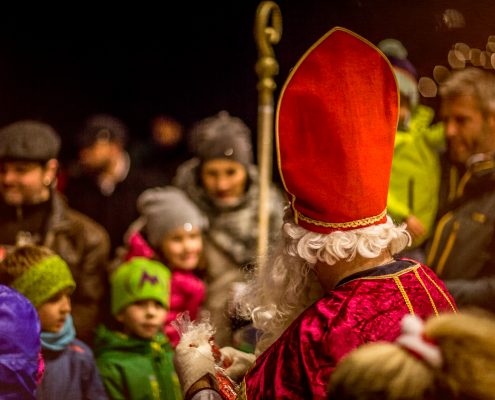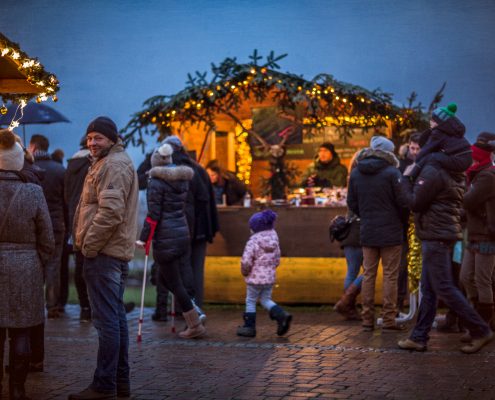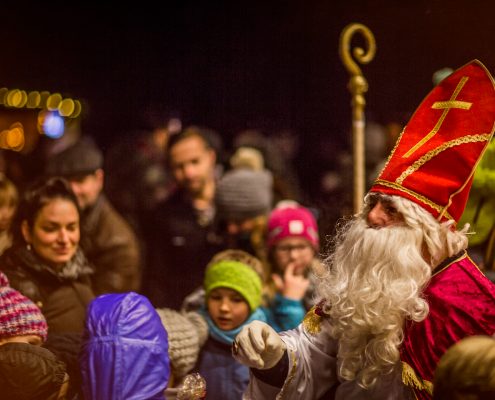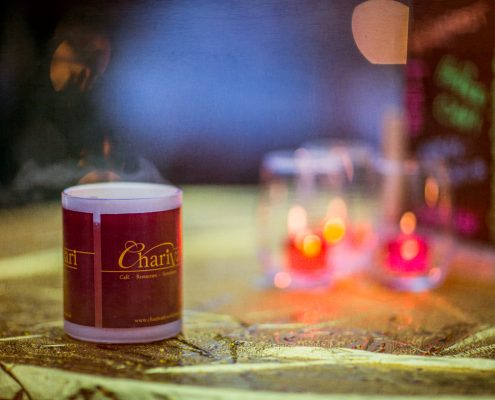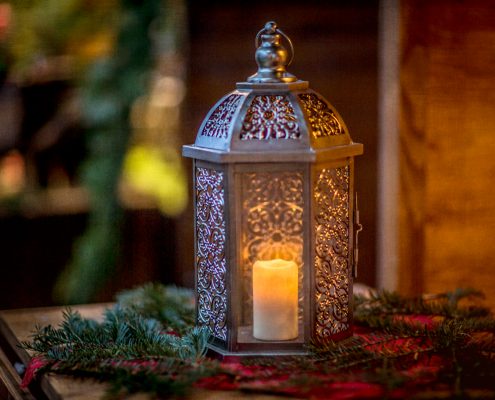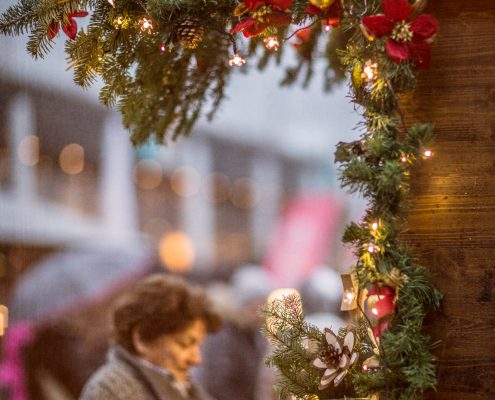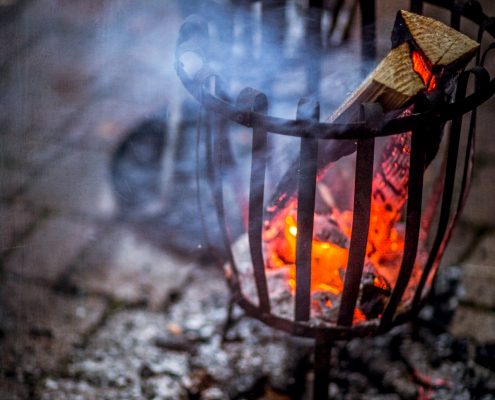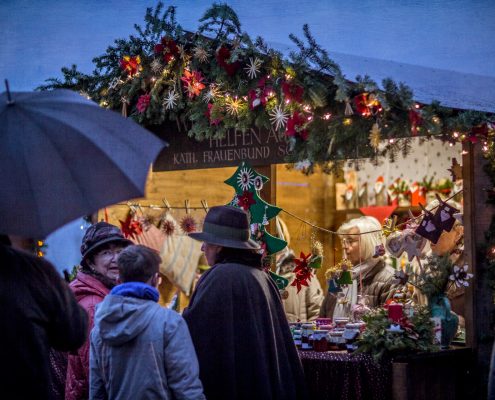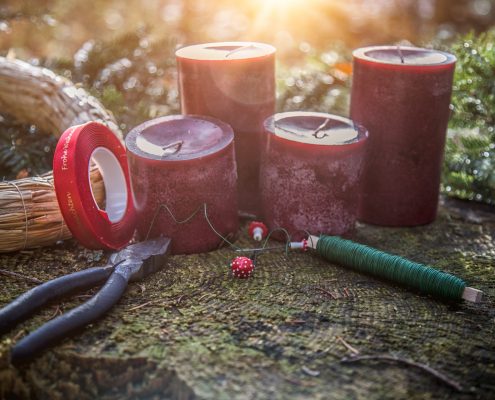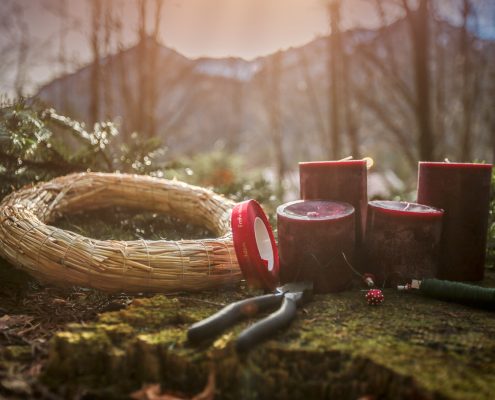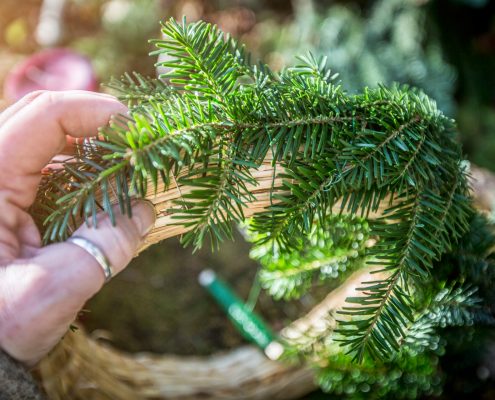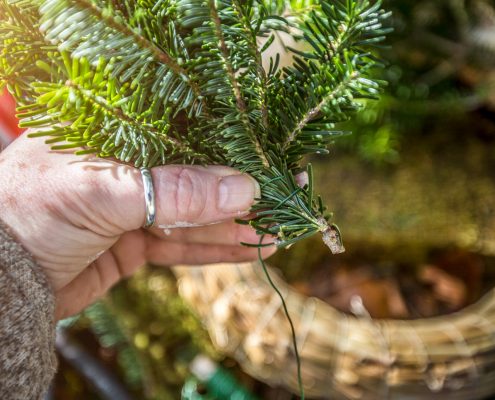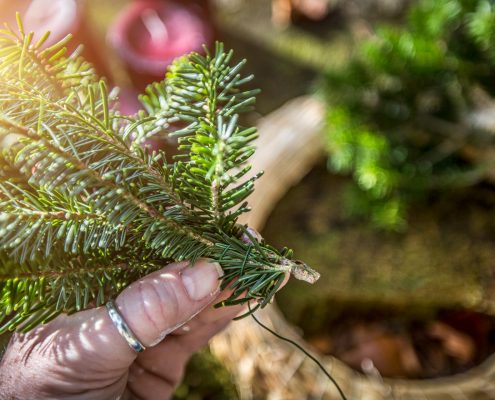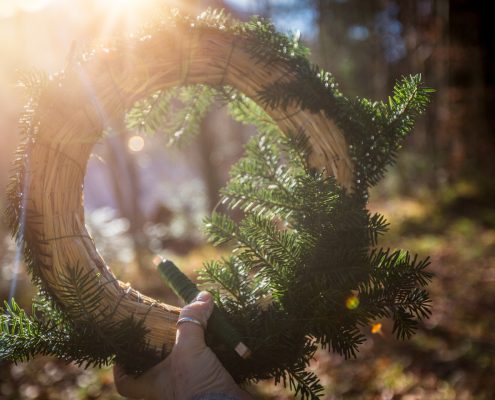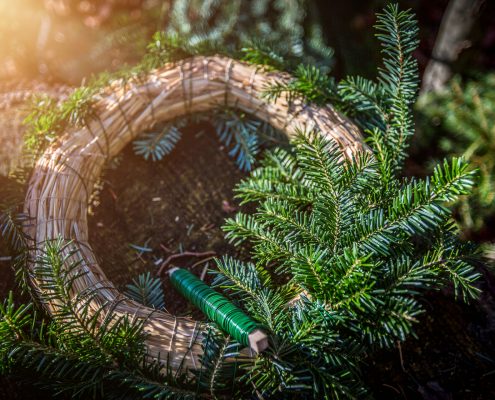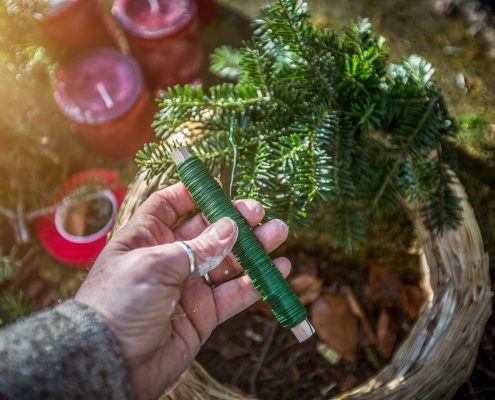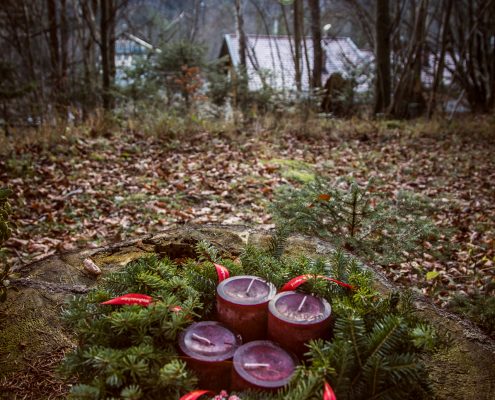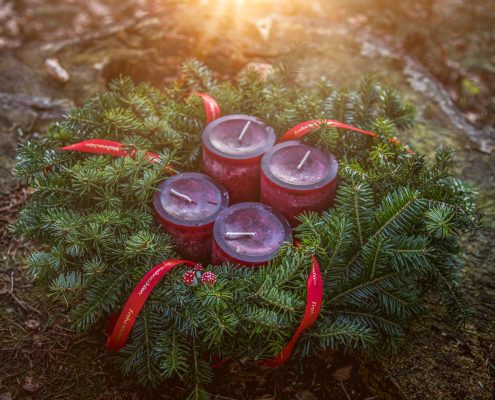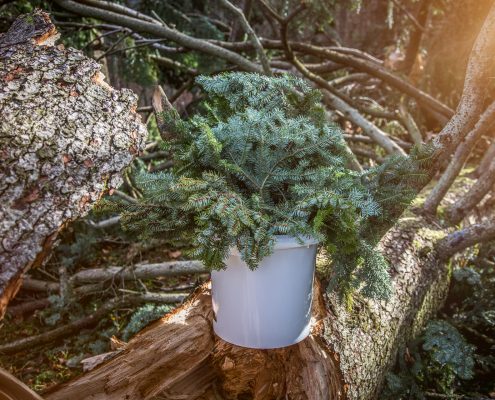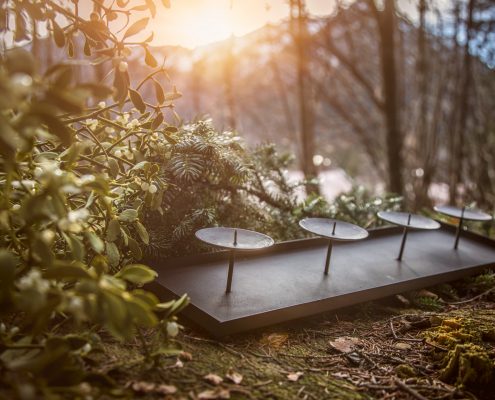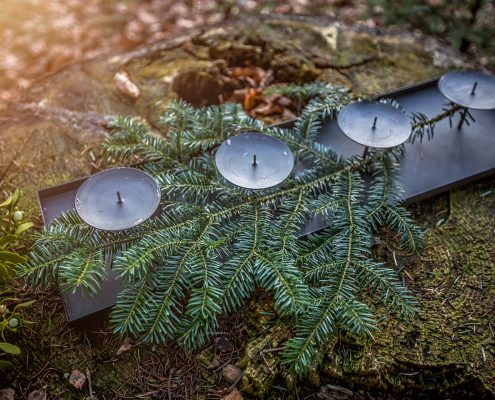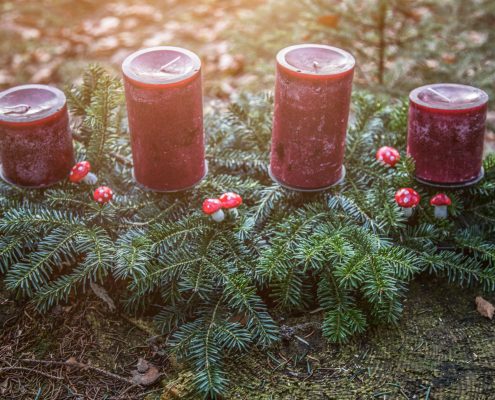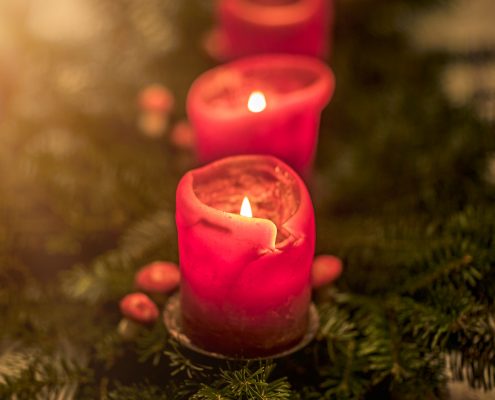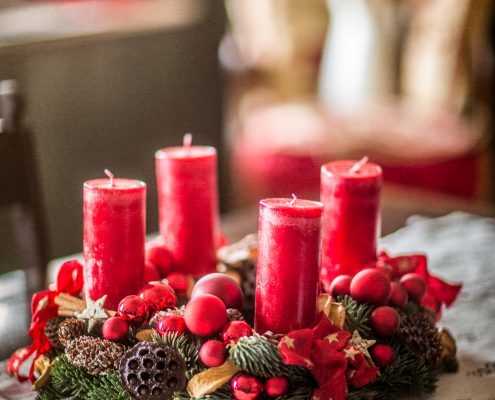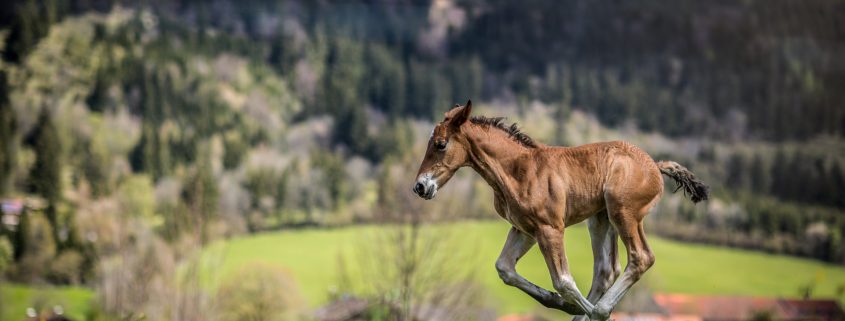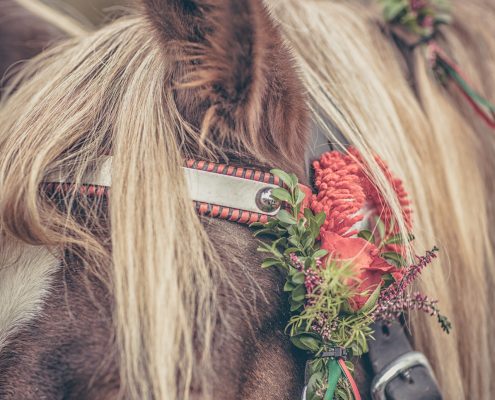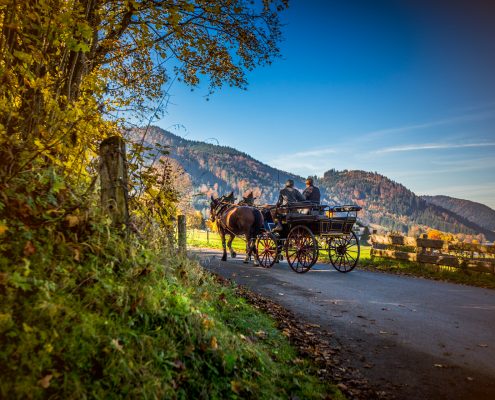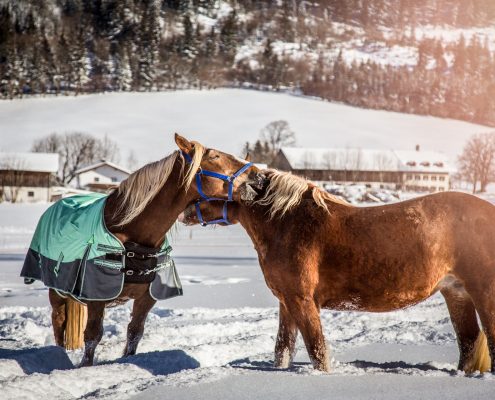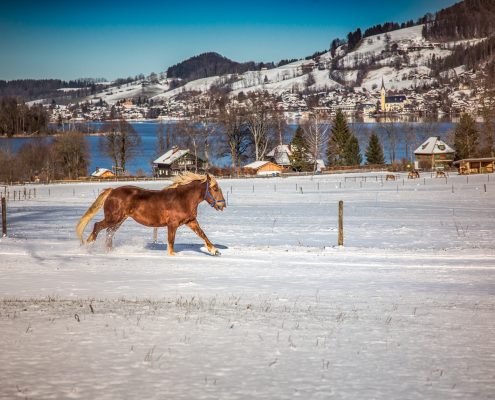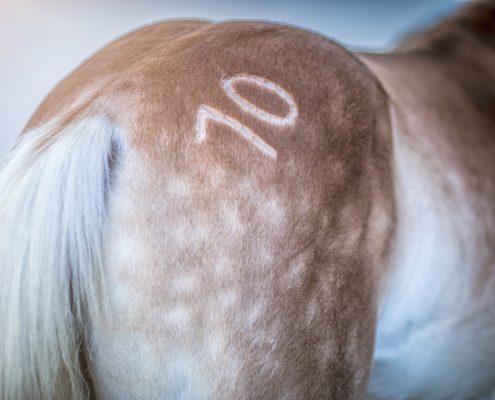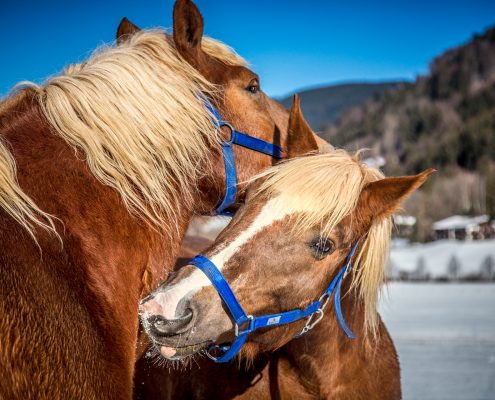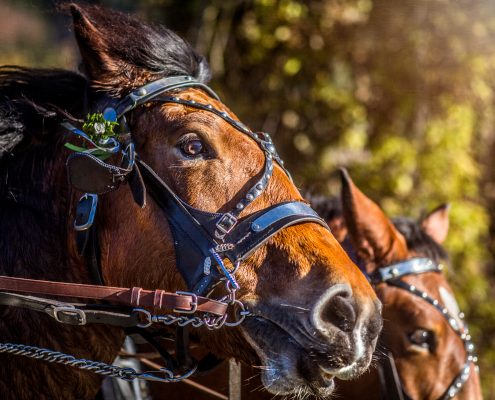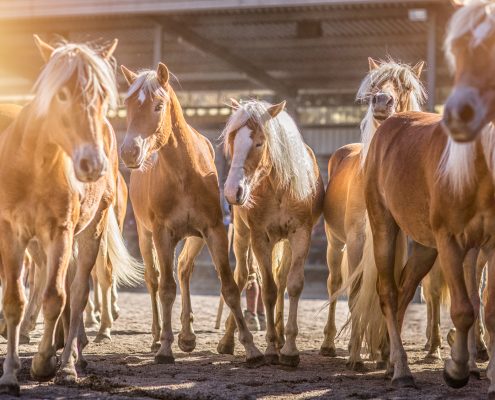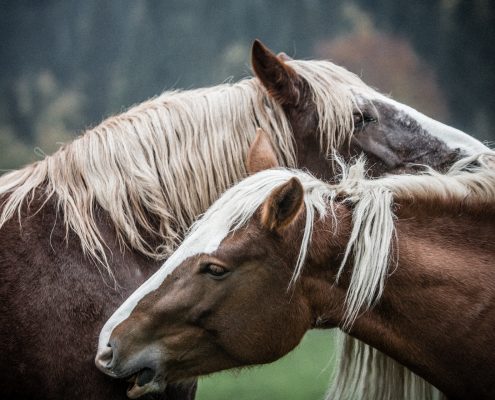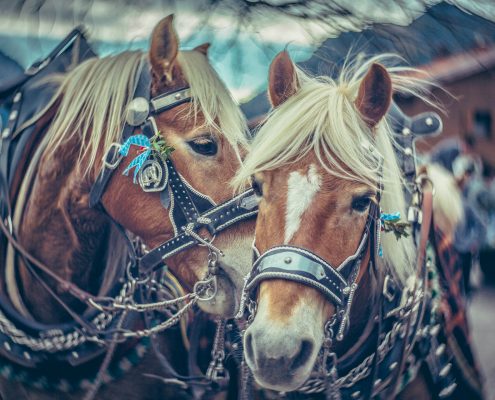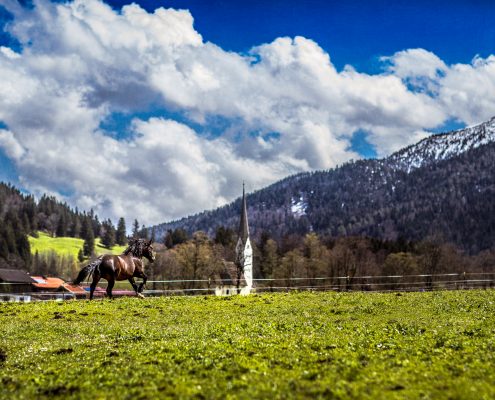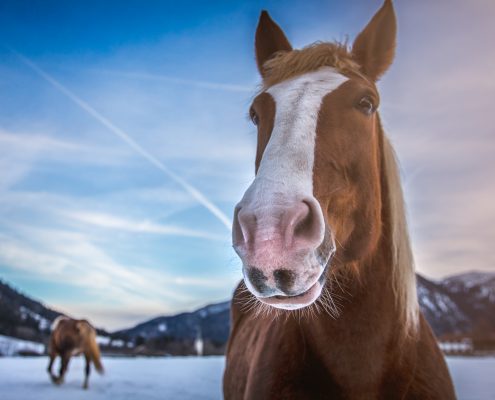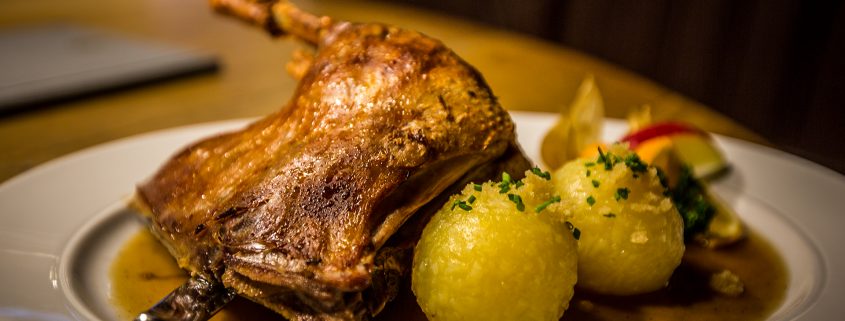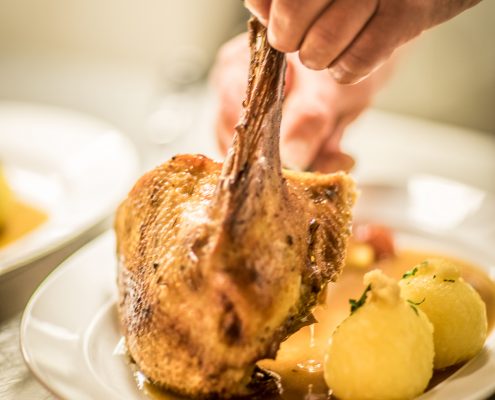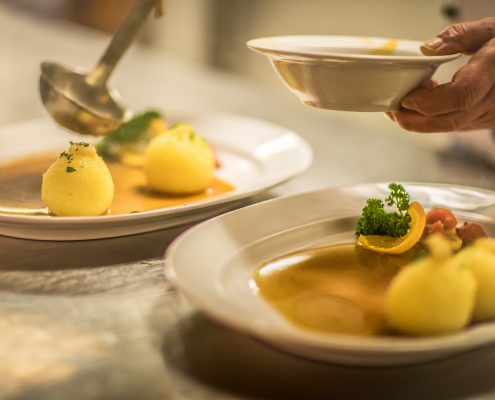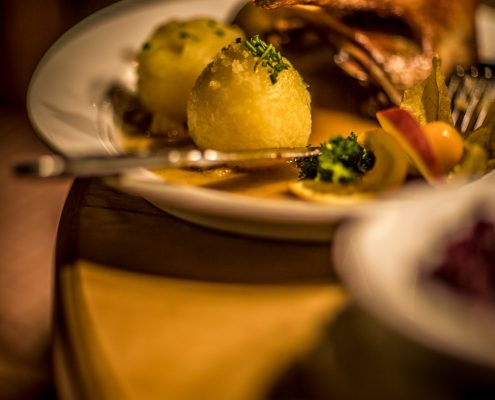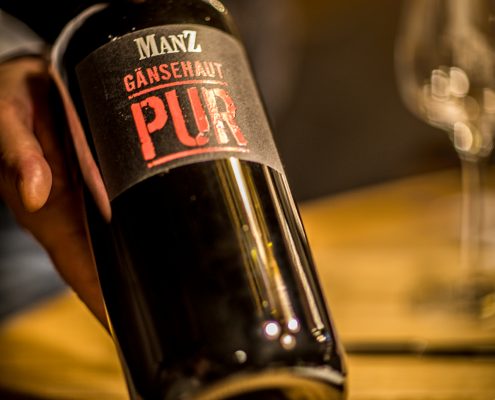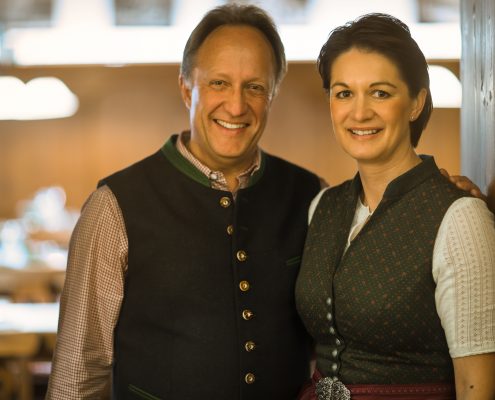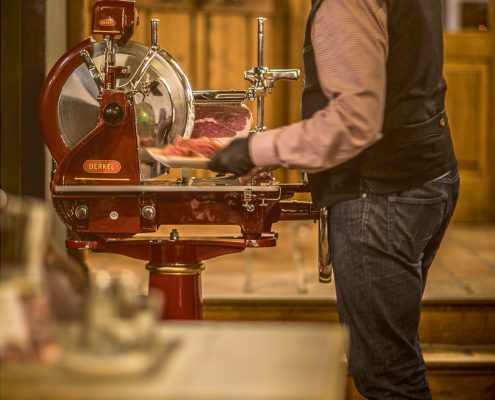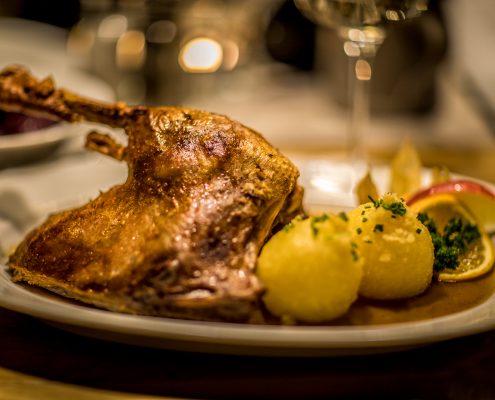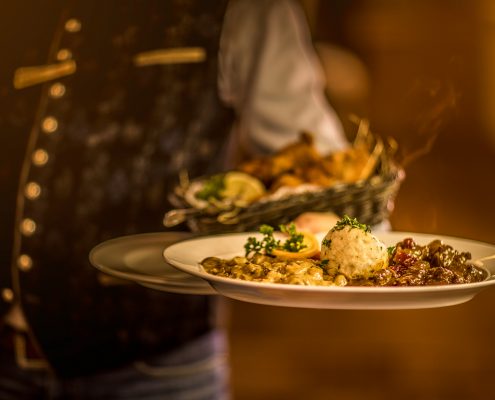![]() “American artist, photographer and professional wanderer who, after 20 years of roaming, put down roots in a 100 year old Bavarian farmhouse and fell in love with the Alpine village and its residents (both 2-legged and 4-legged).”
“American artist, photographer and professional wanderer who, after 20 years of roaming, put down roots in a 100 year old Bavarian farmhouse and fell in love with the Alpine village and its residents (both 2-legged and 4-legged).”
Christmas Market in the Woods
As the winter sun sets on a bitter December weekend, we began the walk back deep into the woods through the dusty blue hour to the remote location of Hennererhof. Each year they host a traditional rural Bavarian Christmas market in the woods.
Little rustic wooden huts showcase the many local handcrafted items for sale dot around the property of the Bavarian farm house. The warm fire light and Christmas smells fill the senses. Icy snow dusted every surface and frosty breath billow from every visitors gathered in cozy groups while sipping warm drinks.
Inside the historic wooden farm house filled with traditional acoustic alpine music chilly families gather in the snug rooms. You can purchase many local gourmet items in their hofladen or farm shop. From aromatherapy to eggs, there isn’t anything you can’t find to sooth your soul. This shop is worth a visit anytime throughout the year.
Twinkling lights sparkle in children excited eyes at the anticipation of a possible Nicolaus sighting, the atmosphere of a Christmas market deep in the forest is something quite special. The air fragrant with the earthy woodland scents blend with the delicious scent of melting cheese from the huge pans of fresh made Kase Spatezel a locally made macaroni and cheese.
Chain saw wood artists, natural bees wax candle makers, hand loomed carpets and fabrics, everything you can imagine all hand crafted from this region. If you haven’t found that perfect gift for those you love for Christmas this year, then chances are you will find that something special at the Woidweihnachtsmarkt am Hennerer.
This year on 9-10 December at 14:00 till 21:00 is the Woidweihnachtsmarkt am Hennerer in Schliersee. This is an event not to be missed. Parking near Hennererhof is very limited so prepare yourself for a long cold walk or grab a ride on one of the horse drawn carriages they have providing transportation. At 5 pm is the expected time for Nicolaus to arrive by horse drawn carriage. Dress warmly from head to toe and bring your hunger.
For more information about the Woidweihnachtsmarkt am Hennerer:
https://www.hennerer.com/aktuelles/
Familie Prem
Hennererstr. 36
83727 Schliersee/Westenhofen
Tel. + Fax: 08026 / 922 99 64
Email: info@hennerer.com
American artist, photographer and professional wanderer who, after 20 years of roaming, put down roots in a 100 year old Bavarian farmhouse and fell in love with the Alpine village and its residents (both 2-legged and 4-legged).
A Christmas Market … Lakeside (Seeweihnacht)
Festive twinkle light adorned market booths sit along side of the picturesque alpine lake, Schliersee. Its dramatic backdrop of snow capped mountains. This is Mother Natures holiday decorating at its best. The air, fragrant with all the magical scents of a traditional German Christmas market. From mulled warm wines, to the cinnamon spiced candied nuts. All these sights and sounds help create the magical atmosphere of this lovely little market.
Seeweihnacht in Schliersee is the first Christmas market to start off the 4 Advent weekends of fabulous holiday festivities. Held on the 2 and 3 December in the Kurpark am See located near Vitalwelt. You can come by car or by train as the market is a short walk from the train station. It is a great alternative to sitting in holiday traffic.
What is wonderful about these small town local Bavarian Christmas markets is they are so intimate. Each both contains gifts that are created by loving passionate hands. You won’t find plastic or mass produced items from lands far away at this market. These are handmade gifts destined to become heirlooms. From the foods to the Christmas ornaments, each item is uniquely special.
Each year the ladies of the Frauenbund from the Catholic church in Schliersee work tirelessly preparing the most fantastic array of German Christmas cookies called “Plätzchen”. You have to arrive early to make sure you get a box as they go quickly. Definitely worth making a trip to savor a few of their delights.
Families have gather around in the firelight listening to Christmas carols while wagging dogs snuggle with warmly bundled children since the first days of this market. Eyes bright with age old Christmas cheer. This is a timeless image of small Bavarian village tradition. Visiting these local markets is where you truly can experience an old time German Christmas market feeling.
Some of the great highlights for the whole family are the horse and carriage rides which are held on Saturday and Sunday at 2 pm till 5pm. Alpine brass Christmas music fills the air every day of the market starting at 8 pm and a very special visitor greets the merry makers at 5pm when Nikolaus arrives in all his Christmas glory.
This is a market that can’t be missed. It’s a great finish to a long day on the slopes.
Opening times:
Saturday 2 December from 2pm till 8pm
Sunday 3 December from 12 till 8pm
Address:
Kurpark Schliersee
Perfallstr. 4
83727 Schliersee
American artist, photographer and professional wanderer who, after 20 years of roaming, put down roots in a 100 year old Bavarian farmhouse and fell in love with the Alpine village and its residents (both 2-legged and 4-legged).
Adventskranz…Creating German Christmas Light
With the first Advent just around the corner, I thought it might be nice to talk about a German Christmas tradition that anyone can make to bring some European Christmas cheer to their holiday homes. The Advent wreath or as it is called in German, Adventskranz, is a wreath or tray holding four candles, one for each week of Advent. On the Sunday of each Advent another candle is lit right up to Christmas Day.
The Adventskranz is first lit on the fourth Sunday before Christmas. Each year the actual date changes to the Liturgical year or church year. The Adventskranz in earlier times was lit while family and friends would gather around it to sing Christmas carols. It held great significance in a time when Christmas trees were only put up and decorated the night before Christmas because in those time real candles were used on live trees.
First Advent also signifies the start of the Christmas Markets or Christkindlmarkt. These warm and wonderful markets are the true highlight of the holiday season so for many in Europe First Advent is a magical date when friends gather in the glow of candle light and share in laughter, song and warm drinks.
Traditionally the Adventskranz was made using a ring shaped wreath form. These forms are available up at your local craft store. In these more modern times, people are thinking outside the box or should I say outside the ring and are using many different shapes and styles to create their wreaths.
For the more traditional wreath, you will need a straw or foam base, four candles and various decorative items to give it your own particular flare. I will try to show you two distinctly different styles of creating your Adventskranz, one traditional and the other a bit more modern which I use in my own house.
Living in Schliersee, I am blessed with an alpine location surrounded by pine trees, but many of you living in either city or country locations can also gather some natural branches for decorating from your local florist or craft center. The bringing in of live Evergreen has been done since ancient times so you will be keeping a great tradition alive. Plus the fresh pine smell fills your home and nothing smells more like Christmas.
Once you have your materials, gather the greens using the florist wire into small bunches like bouquets. Once you have 10 or 15 bunches lay them on the wreath to see if you have enough to cover the entire ring. If you find your bunches are not covering the form completely you can cover the form with wide ribbon. Wrapping it around the form until the entire surface is covered or you can even cover the form with extra flat greenery pieces. Just try to cover the surface evenly. Once you have achieved the covering you want, attach each bouquet to your wreath form using the wire. Over lap each bunch to create a so you can’t see where each begins and ends. This is repeated this until the entire form is covered. Many people like to add dried fruits, nuts or even Christmas ornaments using a glue gun. Add items to your own particular taste or just leave it natural. There are no hard and fast rules. At this point in the project you need to find a way to add your four Advent candles to your wreath. One easy fast way is to lay your wreath on a large plate or platter and in the center hole you stand your candles. Or if you can find candle spikes then use those.
If you think you lack the talent or time to put together an Adventskranz for yourself, my time saving idea might be perfect for you. Find a beautiful dish or tray that is big enough to hold your four candles and arrange your decorative items creatively. It is that simple. For my table I found a wrought iron tray that had four candle holders built right in making the job very easy. These type of decorative candle holders are widely available. While searching online for sources I also found pre-made forms using florist foam or oasis and they even included the candle holders all under $10. There really is no excuse for not bringing some German holiday cheer to your home this year.
American artist, photographer and professional wanderer who, after 20 years of roaming, put down roots in a 100 year old Bavarian farmhouse and fell in love with the Alpine village and its residents (both 2-legged and 4-legged).
Rein it in…It’s the Month of the Horse
November in Schliersee is really the month of the horse. I thought since we just had Leonhardiritt, the religious procession celebrating the blessing of the horses, we should take some time to discover some interesting information about a couple of the amazing breeds we have here in Schliersee.
Recently I had the pleasure of visiting a breeding farm in Austria on the day that the magnificent Haflinger stallions returned from their summer in the high pastures. This breed is truly spectacular. Bred not to far away in the southern Tirol part of Austria, the Haflinger is a warmblood horse known for being efficient, sound, strong, sturdy, and willing. A multi-talented horse, it is commonly used today in dressage, endurance riding, general riding, jumping, mounted athletics, racing, and obviously pulling carriages for historical processions like Leonhardifahrt.
For me, the Haflinger’s coloring is what makes them truly stand out. They are reminiscent of a doe with pale chestnut colored bodies and bright golden manes. I find them to have such great spirited characters. Though they are on the small size they are a horse and not a pony. While at the breeding farm I learned some very interesting tidbits of information. This Tyrollean breed has Arabian blood in them and it is believed that they are all related to one Arab-pony cross named Folie. That mix of blood gives many of these horses a very Arabian style head. They seem to love showing off and being the center of attention.
And on the complete opposite side of the horse characteristic scale, you will find many Kaltblut or Coldblooded horses here in Schliersee. Cold-blooded horses encompass the draft breeds such as Percherons, Shires, Clydesdales, and Belgians. Large-boned and heavy-bodied, these horses were developed to use in draft and agricultural work, and were selected for a calm temperament.
One of my favorite things to see in the early mornings just behind our beloved Leonhardi chapel is when Langerbauer farm lets their horses out of their stalls. The horses seem to store up energy in their powerful legs during the night and just can’t wait to release it exuberantly. Dashing elegantly across the wide pasture one by one. Sharing in their joy and beauty if only as a witness is an incredibly way to start your day.
To see these horses for yourself and even take a ride, make sure to visit some of our beautiful local farms. Many of these farms rent lovely rooms where you can experience life on a Bavarian horse farm. They are also just a stones throw from our alpine lake.
http://www.bayregio.de/gastgeber/Rixnerhof
http://www.langerbauer.de/langerbauer/index.htm
http://www.kirchbergerhof.info/frame-index.htm
http://anderlbauer.schliersee.de/unser_hof/unser_hof.php
gaestehaus-sonnenstatter.de/landwirtschaft/betriebsbeschreibung/
American artist, photographer and professional wanderer who, after 20 years of roaming, put down roots in a 100 year old Bavarian farmhouse and fell in love with the Alpine village and its residents (both 2-legged and 4-legged).
Ratskeller Schliersee Not a Wild Goose Chase
What does paying taxes and roasted goose have in common? In the middle ages, November 11 was pay day and often taxes were paid with a goose. As crazy as that sounds, in this day and age, the tradition of roasted goose on November 11 still lives on in Germany.
Presently, November 11 is known in Germany as, Martinstag (St. Martin’s Day)and it is celebrated by German children with a parade of handmade lanterns in the evening and after a roast goose dinner. The most well-known legend connected to Saint Martin is when he is said to have cut his cloak in half to share with a poorly dressed beggar which later he believe to be Jesus. Making his action a great example for German children to be good samaritans in their lives.
My family loves an amazingly juicy roast goose but I hate to clean my oven after cooking it. Thankfully this year we made reservations to enjoy our deliciously traditional “Martinstag” goose at the Ratskeller in Schliersee. The Ratskeller is located next door to the Rathaus or town hall. It is traditionally where the Mayor and town council would eat so you are always guaranteed a great meal at a good price at your local Ratskeller.
Sadly it is too late to order roast goose this year but I highly recommend making your reservation for next St. Martins day at the Ratskeller. Schliersee. The goose we ordered was perfectly prepared with crisp crackling skin and the portion size seemed enormous for only being a quarter of the goose. Fragrant and tender red cabbage and potato dumplings accompanied our magnificent meal. The knowledgable servers can also suggest for you the perfect wine to pare with your goose. Petra, Matthias and the entire Ratskeller team were warm and wonderful hosts.
If you are unable to get to our Schliersee Ratskeller here is a recipe you can try for yourself at home.
Ingredients
1 Oven ready goose (4-4.5 kg)
hearty pinch of salt
fresh ground pepper
1 bunch of fresh marjoram
4-3 slightly sour apples
2 onions
2 carrots
250 g of celery root
150 g of mushrooms
2-3 tsp cornstarch
1-2 tablespoons creme fraiche
wooden skewers
kitchen twine or cotton string
heavy bottom roasting pan
roasting rack
Preparation
Remove giblets and extra fat from the goose. Wash innards and goose and pat dry. Rub goose inside and out with salt and pepper.
Second
Chop marjoram. Quarter and core apples. Mix both together and stuff in the goose. Close neck and belly opening with skewers and yarn. Tie the legs and wings tightly to the rest on the goose body.
Peel the onions and quarter them. Peel carrots and celery, cut up roughly. Clean mushrooms and wash if necessary. Toss everything with the giblets into the drip pan and place in the preheated oven at 175 ° C or 347°F.
Put the goose on a rack over the dripping pan. In the pan, pour 1/2 liter of boiling water. Roast the goose for 4-4 1/2 hours. Prick the skin to release the fat about a half hour into roasting time.
Approximately 30 minutes before the end of the roasting time, pour about 1/8 of boiling water onto the drip pan and switch on the oven 225 ° C or 437°F.
Dissolve 1 teaspoon of salt in 3 tablespoons of ice-cold water.
Brush the goose about 15 minutes before end of roast twice with the salt and ice water mixture.
Once done lift the goose off the grate and let it rest.
Put the apples and vegetables from the pan through a sieve. Then deglaze the pan with a little hot water scraping up all the baked on bits and put that through the same sieve. Remove as much as possible of the extra grease off the top with a spoon. Put sauce back into roasting pan. Make a mixture of 5 tablespoons of water and starch together till smooth. Pour this into the sauce. Add the creme fraiche and mix till it makes a smooth gravy.
If you are in our area and would love to try a traditional Martinstag goose, please contact Petra & Matthias at the Ratskeller to make your reservations.
https://www.facebook.com/ratskeller.schliersee/
http://www.ratskeller-schliersee.de
American artist, photographer and professional wanderer who, after 20 years of roaming, put down roots in a 100 year old Bavarian farmhouse and fell in love with the Alpine village and its residents (both 2-legged and 4-legged).
